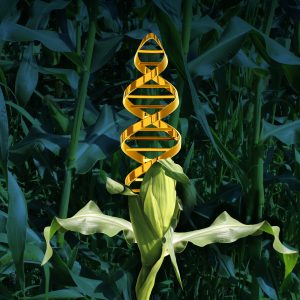A recent case suggests that the attitude of Indian courts toward genetically modified organisms may be shifting.
 Earlier this year, the Supreme Court of India set aside an order of the division bench of the Delhi High Court that revoked a patent granted on genetically modified cotton, holding that the single bench of the High Court should assess the patentability of the invention after hearing arguments from both sides.
Earlier this year, the Supreme Court of India set aside an order of the division bench of the Delhi High Court that revoked a patent granted on genetically modified cotton, holding that the single bench of the High Court should assess the patentability of the invention after hearing arguments from both sides.
The Indian Patent Office granted Patent No. 214436 to Monsanto Technology LLP on genetically modified cotton. In 2016, Monsanto filed a suit before the single judge bench of the Delhi High Court [Civil Suit (Comm) No. 132 of 2016] alleging infringement by Nuziveedu Seeds Ltd., which responded with a counterclaim for invalidity of the patent, among other claims. The single judge ruled in favor of the petitioner and granted an injunction. On appeal, the division bench of the Delhi High Court vacated the injunction and invalidated the patent. That decision was set aside by the Supreme Court, which held that the matter at hand was the injunction and that patentability issues must be dealt with separately by the High Court.
This suggests a changing mindset by the Indian courts regarding patentability of genetically modified living organisms. India may now be set to join the league of various other nations that respect biotechnological inventions.
In Favor of Patenting
The Patents Act, 1970 [“Act”] restricts patentable subject matter to inventions [§2(m)], which is further restricted by certain non-patentable inventions described under Section 3. The provision relevant to genetically modified organisms is Section 3(j), which reads as follow:
“Plants and animals in whole or any part thereof other than microorganisms but including seeds, varieties and species and essentially biological processes for production or propagation of plants and animals.”
The provision does not provide any guidance regarding the patentability of genetically modified organisms. However, a general reading might conclude that it categorizes them as non-patentable subject matter. I argue that this is not true.
Section 3(j) was inserted in the Act through the Patents (Amendment) Act, 2000, which was enacted to fulfill India’s obligations under one of the covered agreements of the Marrakesh Agreement establishing the World Trade Organization’s (WTO) Agreement on Trade-Related Aspects of Intellectual Property Rights (TRIPs Agreement). The Indian Parliament has previously noted that the TRIPs Agreement seeks to promote effective protection of intellectual property rights in all fields of technology.
Article 27 of the TRIPs Agreement, which has been adopted in the Indian law, defines patentable subject matter and lists three exceptions, the relevant one being:
“Plants and animals other than microorganisms, and essentially biological processes for the production of plants and animals other than non-biological and microbiological process…”
Mitsou Matsushita et al., in their commentary on the WTO, has noted that none of these exceptions has been definitively interpreted and that they “are particularly ambiguous and thus, susceptible to different interpretations” (p. 664, 2017). At the same time, the authors have indicated that Article 27.3(b) excludes from patentability only naturally occurring plants and animals and that said exception is qualified by three criteria: (1) non-biological processes; (2) microorganism and microbiological processes; (3) plant varieties. Therefore, genetically modified substances arguably can be granted product patents, as they are not naturally occurring, and can be granted process patents, since they involve microbiological processes and not “essentially biological processes.’”
Genetically Modified Organisms Are Not Naturally Occurring
The Indian law has not yet expounded on this topic. Owing to this void, a look at the position of the law in the United States can provide necessary guidance. The United States follows a “product of nature”doctrine that says patents can be rejected for lack of inventiveness or because they are mere discoveries of naturally occurring substances:
“He who discovers a hitherto unknown phenomenon of nature has no claim to a monopoly of it which the law recognises. If there is to be invention from such a discovery, it must come from the application of the law of nature to a new and useful end.” (Funk Brothers Seed Co. v. Kalo Inoculant Co., 333 US 127 [1948])
While genetically modified organisms are living organisms, they are not naturally occurring. Recognizing this, in Diamond v. Chakrabarty, 447 US 303 [1980], the U.S. Supreme Court held that a genetically modified bacterium capable of digesting multiple components of crude oil is patentable and the reason was very simple—the claimed bacterium was not found in nature nor was its activity exhibited in any naturally occurring bacteria. The Court also stated that the claimed bacterium satisfied the pre-requisites for patentability, as it was a product of human ingenuity having a distinctive name, character and use.
This rationale of the U.S. Supreme Court was followed in multiple cases and patents have been granted to genetically modified animals such as pigs, cows, chickens, monkeys, rabbits, sheep, and salmon. In the case of a transgenic mouse developed in the laboratories of Harvard University with an activated oncogene intended to increase its susceptibility to cancer, jurisdictions including Austria, Belgium, Denmark, Finland, France, Germany, Greece, Ireland, Italy, Luxembourg, the Netherlands, Portugal, Spain, Sweden, the United Kingdom, and the United States have found it to be patentable subject matter. The nine-judge bench of the Canada Supreme Court noted that:
“The extraordinary scientific achievement of altering every single cell in the body of an animal which does not in this altered form exist in nature, by human modifications of ‘the genetic material of which it is composed’, is an inventive composition of matter.”
This shows wide acceptance of the principle that a product patent can be granted to a genetically modified organism if human ingenuity led to the creation of the organism, which is not naturally occurring but the result of human intervention.
Process Patents on Genetically Modified Organisms
The Indian law explicitly excludes “essentially biological processes” from patenting; however, it is silent on the patentability of microbiological processes. This distinction between “essentially biological processes” and “microbiological processes” is also reflected in the recent decision of the Supreme Court. While setting aside the order of the Delhi High Court, the Supreme Court noted that the patent claims concern genetic engineering or biotechnology methods to insert nucleic acid sequences into a plant cell practiced in laboratory conditions, unlike the natural biological process [¶4]. The event of positioning of the said nucleic acid sequence at a unique location in the genome of a plant cell is a separate, subsequent and entirely different invention [¶9].
The decision of the division bench of the Delhi High Court also offers a ray of light. The Court noted that a process shall not be considered as an “essentially biological process”if human intervention amounts to a significant alteration or introduction in the genetic composition of the plant or animal. Even though the Supreme Court has set aside this order, this observation arguably can provide necessary guidance for the future.
Additionally, international treaties weigh in favor of India granting process patents on genetically modified organisms. For instance, Article 53 of the European Patent Convention, which is similarly worded as Section 3(j) of the Patents Act, 1970, allows patenting on microbiological processes and, as described above, Matsushita et al. have argued that the TRIPs framework does not include microbiological processes under non-patentable subject matter.
Patenting for the Greater Good
Genetic modification is expensive and involves lengthy timelines. The results are for the greater good, as genetically modified organisms curb certain diseases or negative traits found in their natural counterparts. Indian legislation, as well as the Courts, must recognize the efforts involved in these processes by allowing such inventions to be patented. This does not require anything more than upholding the basic principles already outlined in India’s patent law.

![[IPWatchdog Logo]](https://ipwatchdog.com/wp-content/themes/IPWatchdog%20-%202023/assets/images/temp/logo-small@2x.png)

![[Advertisement]](https://ipwatchdog.com/wp-content/uploads/2024/04/UnitedLex-May-2-2024-sidebar-700x500-1.jpg)
![[Advertisement]](https://ipwatchdog.com/wp-content/uploads/2024/04/Artificial-Intelligence-2024-REPLAY-sidebar-700x500-corrected.jpg)
![[Advertisement]](https://ipwatchdog.com/wp-content/uploads/2024/04/Patent-Litigation-Masters-2024-sidebar-700x500-1.jpg)

![[Advertisement]](https://ipwatchdog.com/wp-content/uploads/2021/12/WEBINAR-336-x-280-px.png)
![[Advertisement]](https://ipwatchdog.com/wp-content/uploads/2021/12/2021-Patent-Practice-on-Demand-recorded-Feb-2021-336-x-280.jpg)
![[Advertisement]](https://ipwatchdog.com/wp-content/uploads/2021/12/Ad-4-The-Invent-Patent-System™.png)






Join the Discussion
2 comments so far.
Anmol Jain
May 12, 2019 05:15 amDear Sandeep, Thank you for the comment.
I wish to clarify that the article does not restrict it’s scope to microorganisms. When I mention ‘Genetically Modified Organisms’, I include in this phrase all kinds organisms (like rats etc.).
I also agree with you about the patentability of microorganisms allowed by the Indian law since long and therefore, the article in the very initiation itself mentions that Section 3 excludes microorganisms.
With respect to the Calcutta High Court Judgment, I didn’t include it in the analysis as the High Court didn’t reflect much on GMO as a whole.
Sandeep Aggarwal
May 10, 2019 06:08 amThis was already established in Indian Law, at least 17 years ago where one of the High Courts held that the Indian statute on patents does not bar patentability of microorganisms developed in a controlled environment in the laboratories.
Anmol, you might want to check the Calcutta High Court decision in the case of
Dimminaco A G v. Controller of Patents (2002) in respect of patenting of inventions involving micro-organisms where the court opined that in this case a process for creating a vaccine leads to a patentable product even if the end product contains living material. Also, note that the Government of India permitted patenting of microorganisms in India under the Patents (Second Amendment) Bill, 2002, which was passed by the Parliament on 14 May 2002.